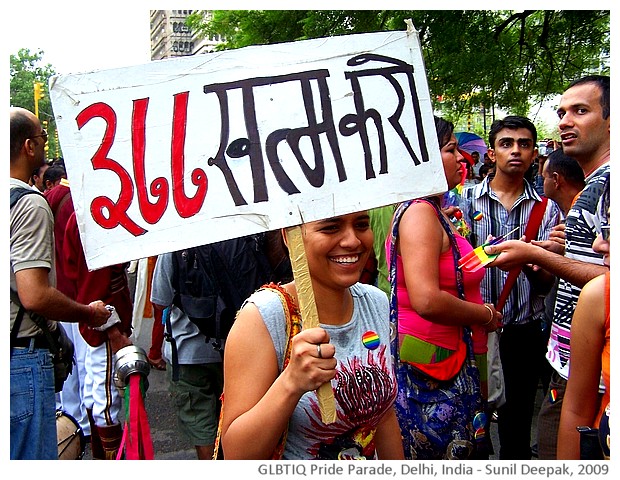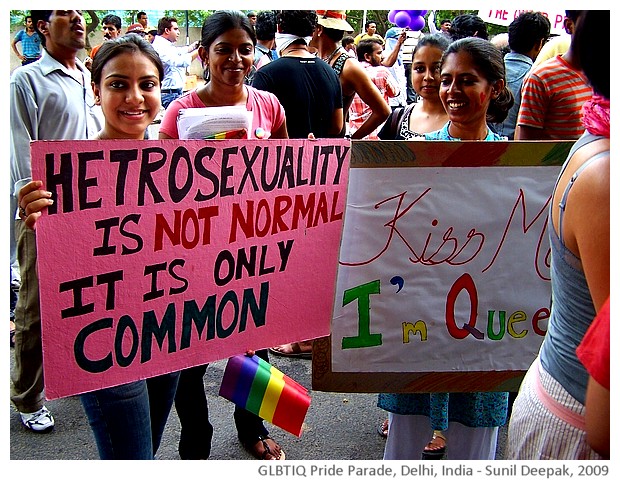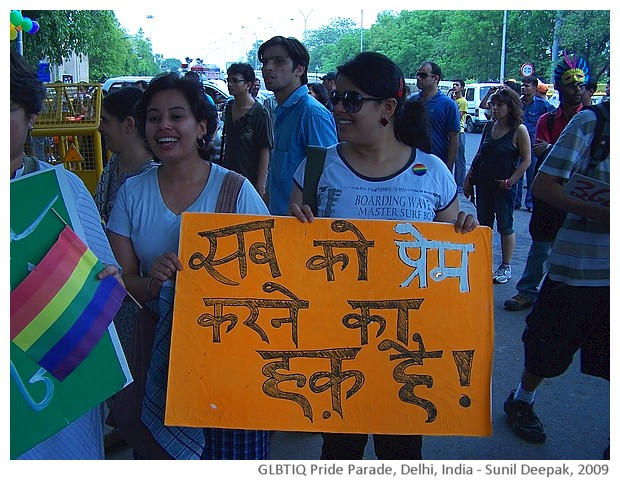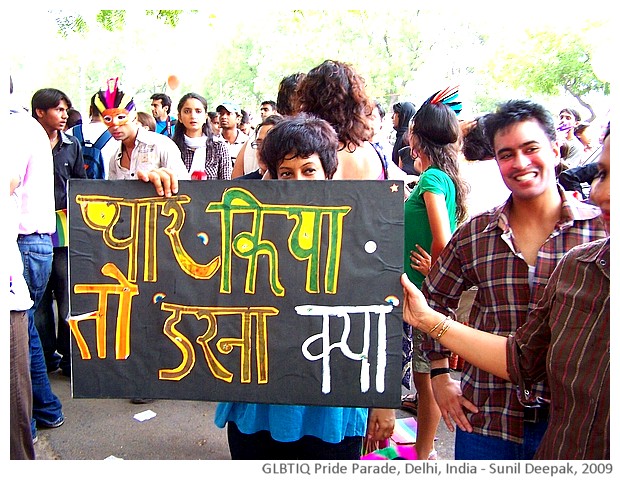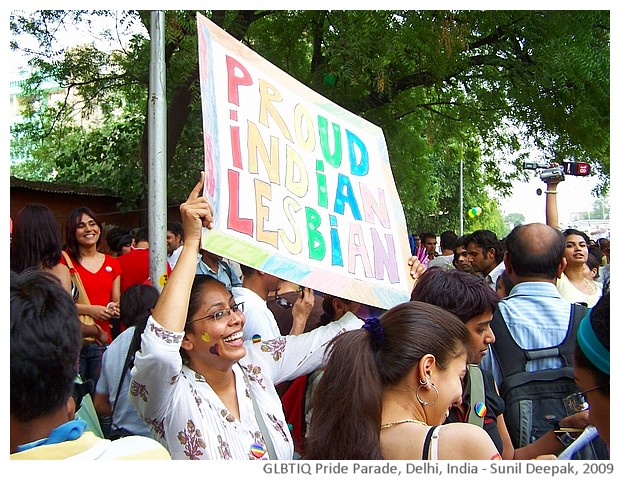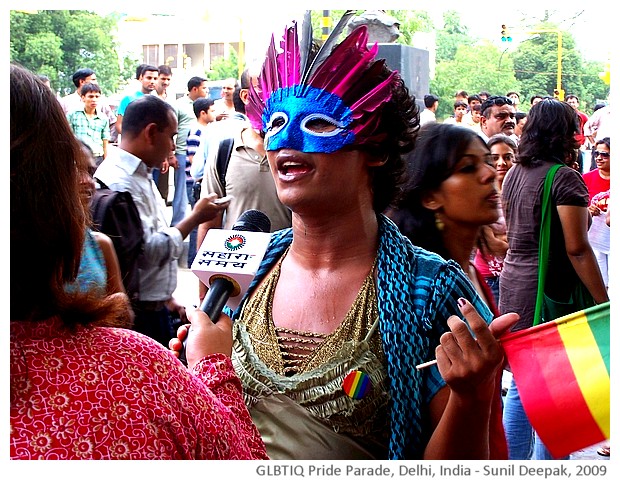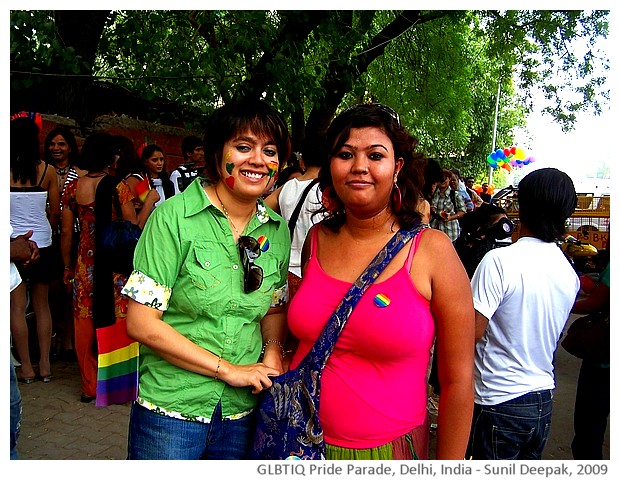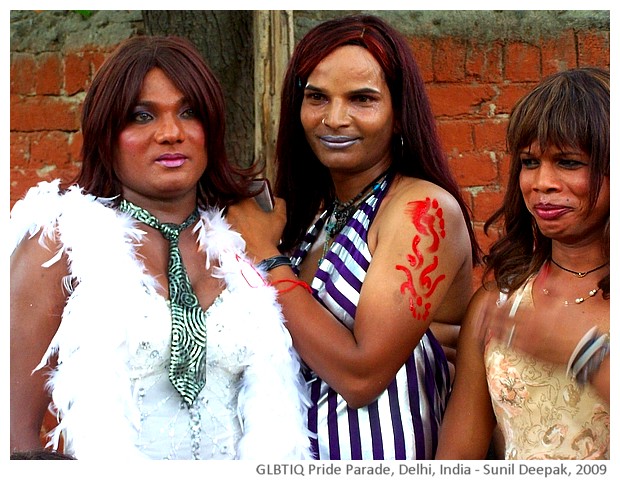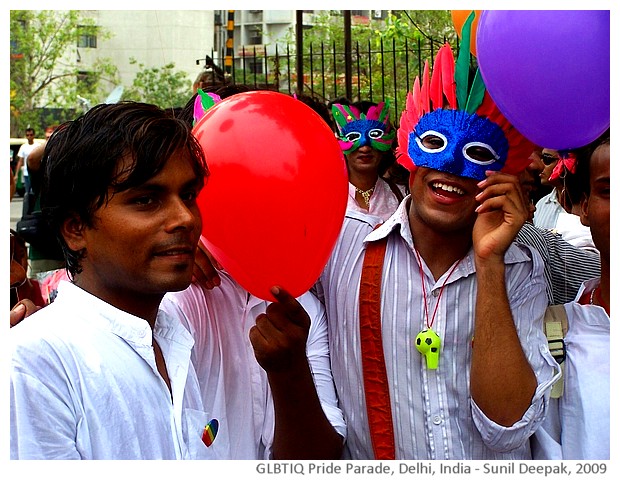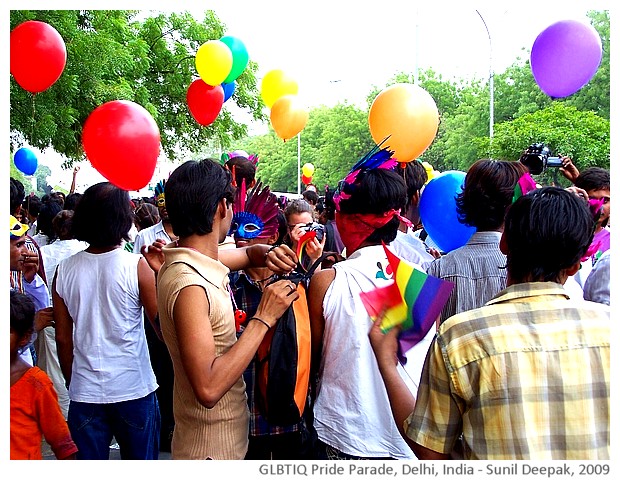Wall painting is an ancient art that goes back to thousands of years, when prehistoric humans started living in caves. The colours and techniques used by prehistoric humans were very different from the way contemporary humans use wall paintings. Yet across these thousands of years, in many ways, wall paintings show a continuity of ideas and functions. This is true across cultures, countries and continents.
This photo-essay on different kinds of wall paintings presents images from my travels in different continents.

WALL DECORATIONS
Wall paintings, that is using colours to make designs and illustrations on the walls, is one way of decorating our private and public places.
Some other ways of decorating the walls include -
Murals: Mural is a generic term, indicating wall decorations including wall paintings, but also designs made by applying stone or other materials. In the contemporary world, increasingly designs and art works are printed on canvas, plastic sheets or even paper and then fixed to the walls.
Mosaics are designs made by putting together small pieces of glass or ceramics, similar to the way pixels of different colours compose images on the computer screens.
ANCIENT WALL PAINTINGS
Prehistoric humans used wall paintings for different reasons such as to record events, as part of religious rites and as part of rites linked to hunting.
The image of a prehistoric wall painting shown below is from Chinhampere in Manica region in Mozambique, not far from the border from Zimbabwe. Ms. Mbuye Aghonda is a widow and is the guardian of the sacred paintings of Chinhampere. The paintings are made on an enormous and relatively smooth rock surface that overlooks a valley from the top of a hill.
To visit these wall paintings, you have to be accompanied by the sacred guardian. As you climb up the hill, first the sacred guardian will go to the paintings to pray and ask for their permission, before you can see them.
The paintings were made over different periods of time and show different wild animals and the hunters. Thus, probably they were part of the ancient hunting rituals. Now there is little wild life in Chinhampere. According to Mbuye, the paintings tell the story of persons who had come from some where across the border of the present-day Zimbabwe, and they had some discussions, after which part of the persons had returned back to their original village, while remaining had decided to settle near Chinhampere.
The ancient wall paintings of Chinhampere are part of a living tradition - every year, there is a village procession and festival, when people walk to the wall to pray and to celebrate.
WALL PAINTINGS IN TRADITIONAL SOCIETIES
In rural areas, and especially among tribal population groups, wall paintings continue to be part of people's lives. Here are two examples of traditional art.
The first image is from Koraput in Odisha (India) from the museum of tribal population groups. It shows the kind of figures used in traditional wall paintings in this area. These wall paintings have social and religious uses, as well as they are people's artistic expression. Even in cities in India, similar paintings can be made during festivals and marriages.

The second image is from Alua in Nampula region in the north of Mozambique, close to the Indian ocean. The village house-wall shows a contemporary scene with a truck bringing liquor or beer bottles, a bar or hotel, where people drink alcohol and the man with the knife illustrates the impact of alcohol drinking. Thus this wall painting is for public awareness, while the hut may belong to some public building or to a village leader or a pastor.
FRESCOES IN MEDIEVAL EUROPE
Frescoes are a special kind of wall painting made on fresh lime plaster, so that the painting becomes part of the building. This art of making frescoes developed especially in medieval Europe. Below you will find an example of frescoes from medieval houses from the city centre of Trento in north-east of Italy.
ACCEPTED CONTEMPORARY WALL PAINTINGS
Contemporary wall paintings can be broadly divided into those that are acceptable to the society and those that different societies usually criminalise. First let us look at different ways in which societies use wall-paintings as a device to attract attention and to tell people about the functions of a building.
The first image is from Guwahati (Assam) in the north-eastern part of India. It shows images painted on a Hindu temple wall. Such use of temple walls is very common in Asia and especially in India. It tells people that the building is a temple. It is also a time-saving device so that if you do not have enough time to go inside the temple to do proper prayers, you can do a hurried prayer, while passing in front of the sacred images.

The image below is from Kunming in Yunnan (China). I am not sure if it is a wall painting or if it is a painted canvas or plastic sheets fixed to the wall. It shows tribal dresses and costumes. As the contemporary world moves away from traditional societies to cities where people are more homogenised with western clothes and apartment houses, often cities create museums and images in public spaces to remind them about tribal dresses, songs, rites and customs. Usually this means simplifying the earlier complex societies into something that can be marketed for selling souvenirs and attracting tourists.
The next image is from the university area in Bologna (Italy), showing the shutters of a restaurant that have been painted to make publicity for the restaurant and to tell the passers-by about the kind of food available there.
The next image is once again from a rural area in Yunnan province of China and shows a nursery school. Often schools and children's wards in hospitals have bright and colourful images of happy and playing children, to increase their attractiveness and to make the small children forget the pain or the separation from their families!
The image below is from Amsterdam (Netherlands) showing an art shop for tourists. Here wall paintings are useful to attract customers.
The next two images are from the tiny medieval town of Dozza, near Bologna, in Italy. Every two years, Dozza invites some painters to come and use its houses as a canvas for making paintings. Over the decades, this has turned Dozza into an open air art gallery, where most houses have paintings on their walls. In a country full of quaint medieval towns with cobbled streets and castles with moats, the wall-paintings of Dozza help to give it a distinct image for attracting tourists.
The image below is one of my favourite paintings in Dozza, because it uses the windows of the house as the ears of the two gossipping neighbours.

Similar to Dozza, the seaside holiday town of
Caorle near Venice (Italy) uses colours in two ways - for wall-paintings as shown in the image below, and also to paint the different houses in bright colours so that together they give a bright colourful look to the city. Once again, colours are used here to attract tourists.
Some time back, on TED video talks, I remember watching
a video in which Mr. Edi Rama, the mayor of Tirana in Albania, tells of how he used colours to give optimism and self-confidence to his city. Do
watch this video if you have not seen it.
The next image is from
Vienna in Austria, showing a hotel that uses colour on its walls to give itself a distinct image and to attract people. As you walk in front of such a colourful building, it is natural to feel curious about it and to remember it.

All the above are different examples of how societies use colours and wall paintings as part of their information-providing, awareness raising and marketing.
GRAFFITI ART
Some times persons, especially young people, use wall paintings in street art to express their anger, to provoke and to protest. Often, such wall-paintings are done at night and in most countries, making such paintings is considered as a crime. However, sometimes, cities provide space to their young people where they can express themselves freely, without criminalising it.
Here are some examples of this rebellious art, also known as graffiti. The first two examples are from the university area in Goiania in Brazil (South America). Note the person with a cape on his/her head and the face covered by a handkerchief in the second image, an almost universal sign of protesting youth all over the world.
The next two examples are from Bologna (Italy) and are the works of a young artist called Ericailcané, who makes graffiti on abandoned buildings. Giant sized animals are a characteristic of his works. He expresses the alienation of youth in the contemporary society, usually seen as controlling (like the robotic hand turning the key in elephant's ass in the second image).

The next two images are also from Bologna, from the university area and these show expression of protest. The first one is about economic crisis and it has a message targeted at banks and governments, it says "We won't pay the bill for Your crisis".
The second image was made during Libyan war, probably by Libyan students (it is signed as "autonomous collective of students"), and shows Qaddafi with a no-entry sign and expresses solidarity with Arabs (it also has the student's website address, so even while protesting, students use it as a tool to get interested young people to their website).
The last image of this photo-essay is from the downtown in Nairobi (Kenya) and was clicked during last year (2012). It is a scathing satire, protesting against the political corruption and abuse of democracy.

CONCLUSIONS
Today as we move towards the digital world, perhaps our blog-walls can also be considered as wall-paintings - they are certainly used in different ways like the wall-paintings - to inform, to protest, to pray, to market or may be, just to express our sense of beauty. What ever be our goal, the wall paintings continue to be a potent and contemporary medium to share our message.
I hope that you liked this quick world-tour to the wall-paintings in different continents.
Personally, I feel that the graffiti made by the protesting youth, is also an art form. It is an important way to let people express themselves. I agree that if someone uses the wall of my house to give a protest message through graffiti, probably I would not be so happy about it. Still, I think that the cities can provide official spaces to graffiti makers. Apart from the protests, it also brings some vibrant colours and a human touch to our cities. What do you say?
***
